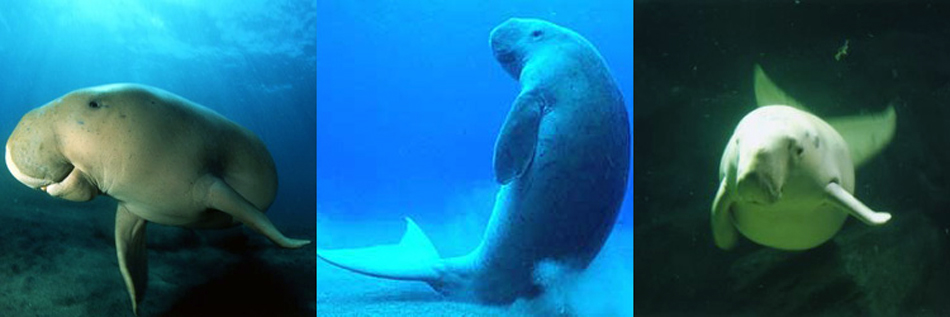
The dugong is an aquatic animal of large size, greyish-white and herbivore. Exceed 3 meters in length, weighing between 400 and 500 kg is a mammal, and in spite of his life takes place completely at sea, like all cetaceans is forced to rise to the surface periodically for air.
The dugong is related to the myth of the sirens (so as to be ranked in the order of Sirenia) because of the characteristics of two breasts of the female, placed in position breastplate. When the female emerges holding in her arms the baby who is breast-feeding, maternal figure resembles a human.
It is believed that the mythical sirens, beings from the bust of a woman and the tail of a fish which many legends refer, are nothing more than groups of dugongs seen from a long distance and sailors too long away from the mainland.
The myth of the sirens is as old as are dugongs, whose remains have been found dating back to 6000 years ago in Akab Island. The analysis of the animal has revealed that it was left unchanged for a long evolution. The only surviving species of dugong is therefore now considered protected, despite the illegal hunting or fishing careless they are slowly causing complete estinzione.Un time dugongs were also prevalent in the Mediterranean Sea.
Dugongs are semi-nomadic, often travelling long distances in search of food, but staying within a certain range their entire life. Large numbers often move together from one area to another. It is thought that these movements are caused by changes in seagrass availability. Their memory allows them to return to specific points after long travels. Dugong movements mostly occur within a localised area of seagrass beds, and animals in the same region show individualistic patterns of movement. Daily movement is affected by the tides. In areas where there is a large tidal range, dugongs travel with the tide in order to access shallower feeding areas. In Moreton Bay, dugongs often travel between foraging grounds inside the bay and warmer oceanic waters. At higher latitudes dugongs make seasonal travels to reach warmer water during the winter. Occasionally individual dugongs make long-distance travels over many days, and can travel over deep ocean waters.


